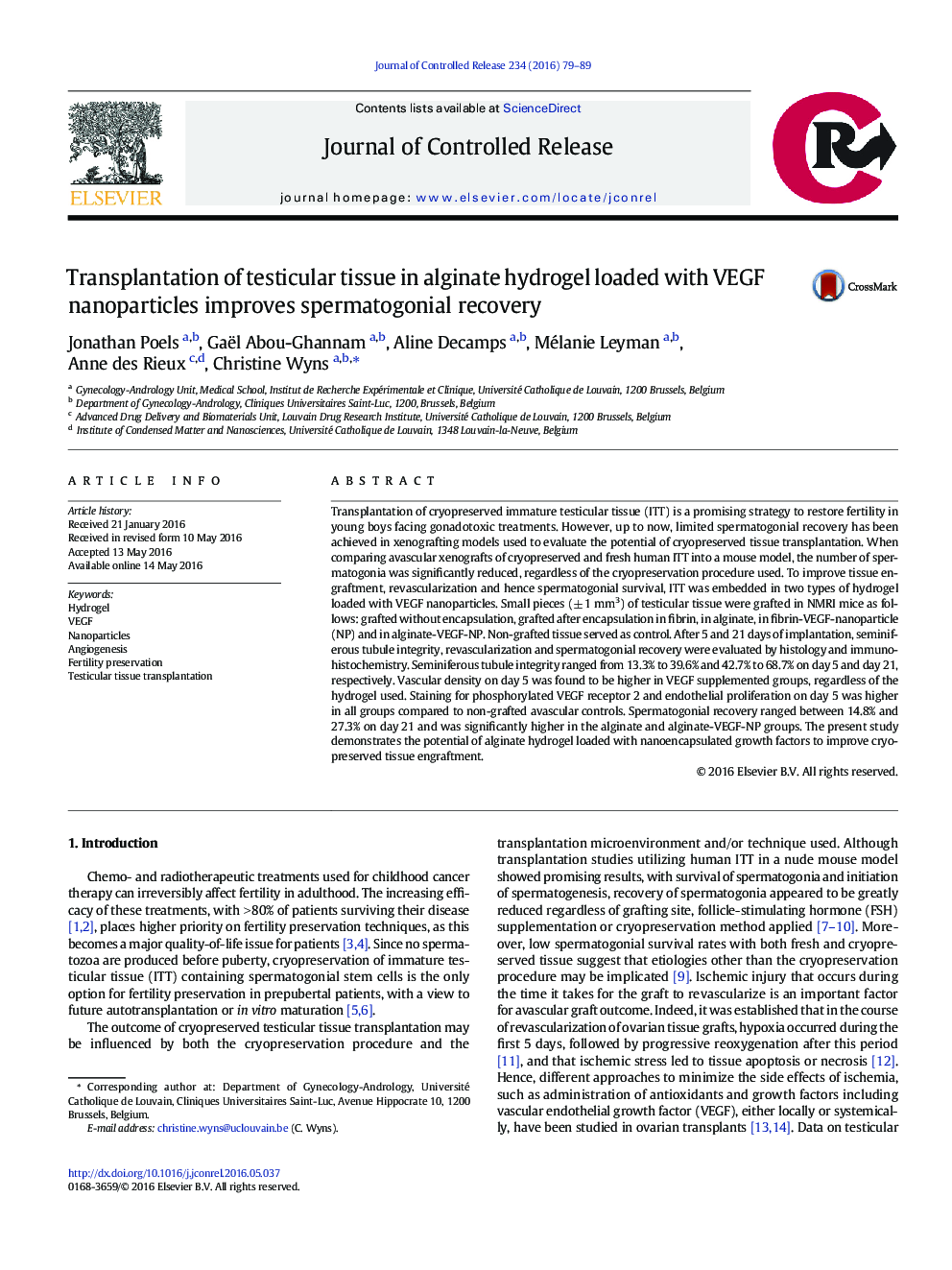| Article ID | Journal | Published Year | Pages | File Type |
|---|---|---|---|---|
| 1423511 | Journal of Controlled Release | 2016 | 11 Pages |
Transplantation of cryopreserved immature testicular tissue (ITT) is a promising strategy to restore fertility in young boys facing gonadotoxic treatments. However, up to now, limited spermatogonial recovery has been achieved in xenografting models used to evaluate the potential of cryopreserved tissue transplantation. When comparing avascular xenografts of cryopreserved and fresh human ITT into a mouse model, the number of spermatogonia was significantly reduced, regardless of the cryopreservation procedure used. To improve tissue engraftment, revascularization and hence spermatogonial survival, ITT was embedded in two types of hydrogel loaded with VEGF nanoparticles. Small pieces (± 1 mm3) of testicular tissue were grafted in NMRI mice as follows: grafted without encapsulation, grafted after encapsulation in fibrin, in alginate, in fibrin-VEGF-nanoparticle (NP) and in alginate-VEGF-NP. Non-grafted tissue served as control. After 5 and 21 days of implantation, seminiferous tubule integrity, revascularization and spermatogonial recovery were evaluated by histology and immunohistochemistry. Seminiferous tubule integrity ranged from 13.3% to 39.6% and 42.7% to 68.7% on day 5 and day 21, respectively. Vascular density on day 5 was found to be higher in VEGF supplemented groups, regardless of the hydrogel used. Staining for phosphorylated VEGF receptor 2 and endothelial proliferation on day 5 was higher in all groups compared to non-grafted avascular controls. Spermatogonial recovery ranged between 14.8% and 27.3% on day 21 and was significantly higher in the alginate and alginate-VEGF-NP groups. The present study demonstrates the potential of alginate hydrogel loaded with nanoencapsulated growth factors to improve cryopreserved tissue engraftment.
Graphical abstractFigure optionsDownload full-size imageDownload high-quality image (337 K)Download as PowerPoint slide
